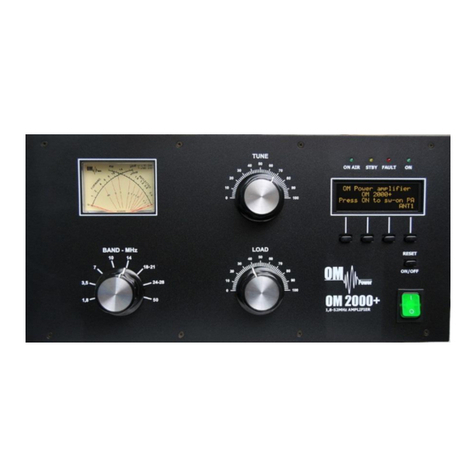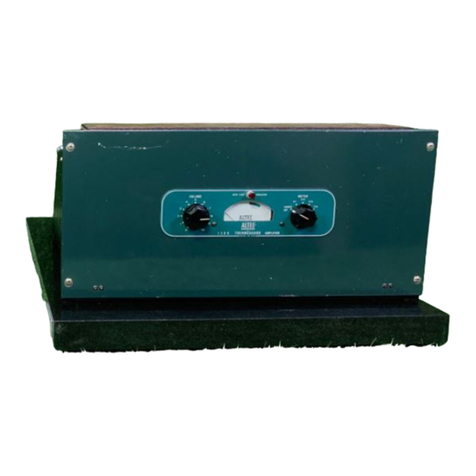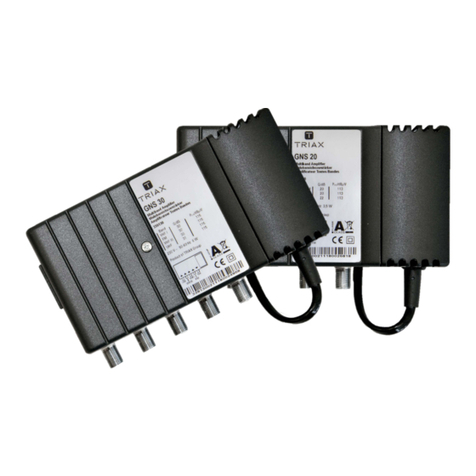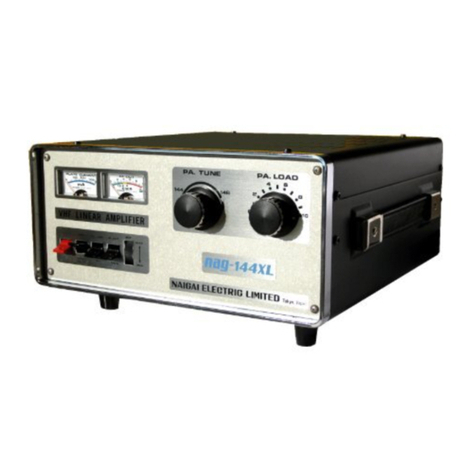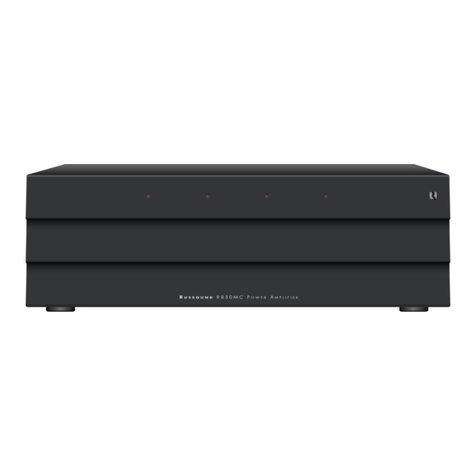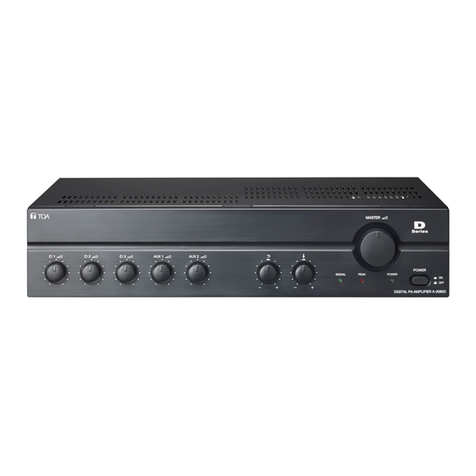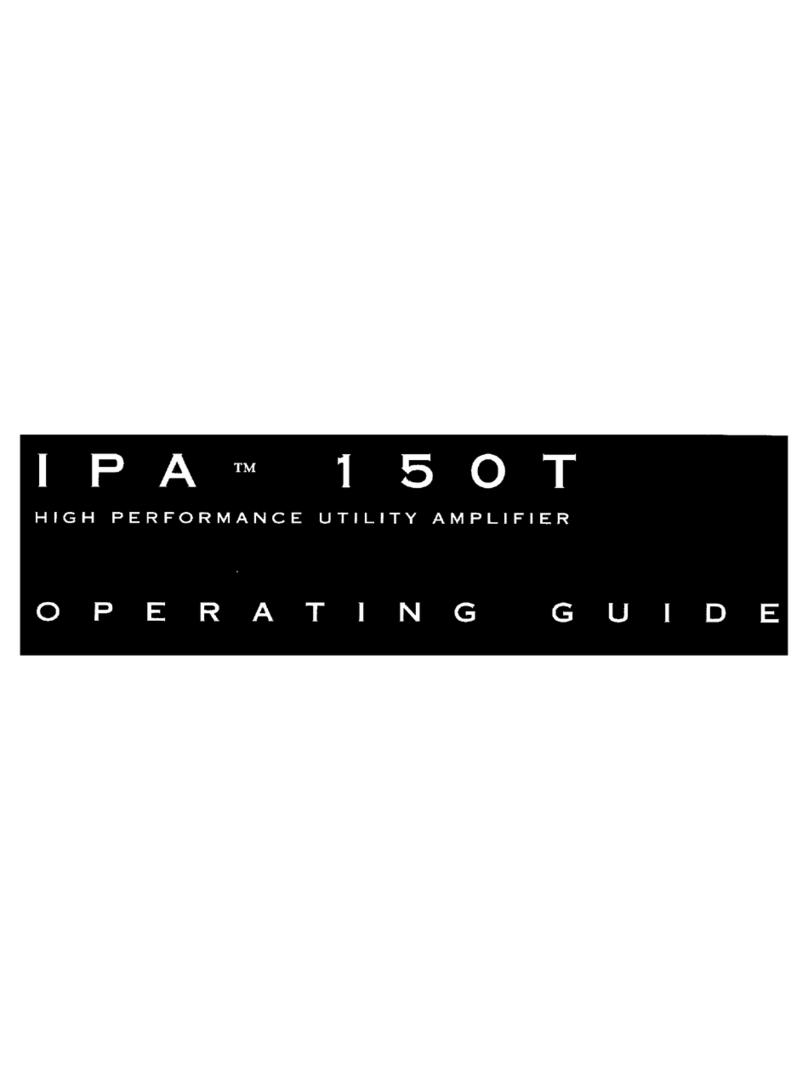Grant Fidelity RITA-880S User manual

1 | P a g e
www.grantfidelity.com
Ph: 1-888-477-5379
Grant Fidelity RITA-880S Tube Amplifier
Thank you for your purchase of the Grant Fidelity Reference
Integrated Tube Amplifier (RITA-880). The product was originally
sold as RITA-880 model without any upgrade tubes. Later on
Rita was provided with upgraded tubes included in the price
hence the model number is referred as RITA-880S.
From our new production run in mid 2012, we have upgraded
the capacitors inside the amp to Beryllium Copper high end
capacitors. The amplifier model remains as RITA-880S and
upgrade tubes becomes optional to buyers. Please read our
website product listing page for detailed information about tubes
included with your purchase price.
As a high quality audiophile tube amplifier, the RITA-880S will
bring you many years of enjoyment if the amplifier is used and
maintained properly.
First Time Use
Please carefully unpack your RITA-880S and keep all packaging
material for later use and storage. Your package includes the
amplifier, the remote control and the high end power cord
provided.
Your amp may have jumper resistors on the speaker terminals
from the factory. These are visible from the outside of the amp.
Please remove them when hooking up your speakers. They are

2 | P a g e
there to avoid damage to amp if turned on without speakers
hooked up.
Depending on shipping arrangement, you may find all tubes (8 in
total) packed under the top cover (remove the top 6 screws to
access the tubes), or packed in a separate shipping box.
Tube Installation:
Install each tube into its correct socket as shown and described
below:
Front of Rita
1. The amp uses 4 x KT88 power tubes, 2 x 6SN7 driver tubes
and 2 x 6SL7 pre-amplifier tubes. All sockets look the same
and can take any of the 8 tubes, so please make sure you
have the right tube types in the right sockets, otherwise it
can cause serious damage to your new amplifier and new
tubes. Such damages are not covered by warranty.

3 | P a g e
2. The amp is pre-biased by Grant Fidelity before shipping –all
tubes are marked for its socket position on either the
individual tube box, or on a smaller sticker on each tube.
Please follow such markings while you install your tubes for
the first time.
3. Please remove the paper sticker on the tube once you identify
the tube to the matching socket spot. Do not leave the paper
sticker in the amplifier as this may be a fire hazard when the
amp heats up during operation. Use common sense for safe
operation.
4. This amplifier has fixed biasing from the end user point of
view and does not have user assessable bias pots like some
tube amps do. The tubes provided with the amplifier have
been carefully matched for best performance before shipping
so you can just plug in the tubes and you are ready to go.
5. When handling tubes, wear a cotton glove or use a cotton
cloth –do not touch tubes with bare hands. The oil on your
hand will leave a residual on the tubes and once tubes are
turned on, such residual will be permanently burnt onto the
glass and may reduce the life of the tubes.
6. When installing tubes, make sure to align the guide on the
tube base to the socket then gently push the tube in for a
secure contact. Do not press tube with excessive force at a
single point. Tube glass enclosure is like egg shell –hold it in
your palm then press with forces from all directions gently.
Do not pinch or crush the tubes! When removing tubes, use a
gentle rocking force to remove it from the socket –do not pull
the glass enclosure with excessive force, otherwise you may
break the glass seal with the tube base.

4 | P a g e
Front Panel Buttons:
Left 1st and 2nd buttons: for volume adjustment
Middle button: Power on/off. Please note that tube amp should
not be frequently turned on and off –it will cause tube damages
as the tube filament being heated up and turned off frequently
without cooling off. Please allow 5-10 minutes for tubes to cool
off after power off then turn the amp back on again.
Right 1st button: Mode –this is for switching among the 5 inputs
of the amplifier –first input is the XLR balanced input, 2-5 inputs
are RCA unbalanced input. Press the button each time will
change the input and you can cycle through all 5 of them. You
may also use the remote control to select input.
Right 2nd button: Mute / Display –short press the button will
mute the amp’s output; press and hold the button will turn off
the digital readout display.
Volume
Down
Volume
Up
Power
On/Off
Display /Mute
Mode / Input
Selection
Digital Readout:
1st digit: input #
Last 2 digitals: volume

5 | P a g e
Digital Read-out: The 3 digits readout display includes two types
of information –1st digit is the input the amp is playing, 2nd and
3rd digits together is the volume level the amp is playing at
(ranging from 01 to 99). Although the volume display can go up
to 99 (maximum two digits LED display), it does NOT mean the
amp can be played at volume setting of 99 all the time.
Depending on the speaker load connected to the amp, the
volume control should be set at a level that you do NOT over
drive the amplifier to distortion, if you hear distortion reduce the
volume. Watch the power meters, if they are hitting to the far
right all the time then you are overdriving the amp. Overdriving
may permanently damage the amp and such damages are not
covered by manufacturer’s warranty.
Rear Panel Connections:
The rear panel of this amplifier is very self explanatory.
Front meter
blue light
ON/Off
Main power
Fuse holder
Power supply
voltage

6 | P a g e
Left side: 4 RCA inputs (numbered as 2 to 5)
1 XLR input (numbered as 1)
When connecting your source (such as CD player) to the
amplifier, make sure to match Left and Right channel correctly.
This is usually done by matching Red to Red, Black to Black.
When connecting XLR cable to the amplifier, please make sure
the pins are aligned correctly then gently push in. When you
hear a slight click sound, the cable has been connected properly.
Do not use excessive force to push cable in with wrong pin
alignment. When removing XLR cable from the input, you should
press the metal clip on the connector to release the cable then
pull it out. Do not pull the cable without pressing the clip –you
will damage the cable and the amp connector.
Light Control switch:
This is the ON/Off switch for the front meters and lighting. If you
prefer not having the meters on when using the amp, turn the
switch to OFF position.
If you wish to turn off the digital readout display, use the front
‘mute’ button – press and hold to turn it off.
Power Supply Voltage:
We sell the amp worldwide with factory providing a matched
power supply to your country’s voltage. You cannot run a 115V
amp in a country with 230V power supply or vice versa. A step
up/down transformer is needed to convert your local power
supply voltage to match the amp, but this will usually deteriorate
the sound quality of the amp. We strongly suggest that you
order an amp matching your local power supply from the factory
and do not use a step up/down transformer.

7 | P a g e
Main Power fuse holder:
The main power fuse is located above the power socket and
hidden in a fuse holder. Use a flat knife to pry open the fuse
holder to access the fuse. This amp uses a 5x20mm size 10 amp
250V fast blown glass fuse. Do not use a different size fuse or
different type of fuse.
Speaker terminals:
This amp will work with nominal speaker loads of 4 to 16 ohms.
Do not connect multiple pairs of speakers to both output
terminals at the same time –you will permanently damage the
amplifier and such damages will not be covered by warranty.
Check your speaker’s specification to decide which speaker
terminal to use to match the impedance (measured in ohm).
For speakers rated at 6 to 16 ohms, use the 8 ohm positive
connector (red), for speakers rated 4 to 6 ohms use the 4 ohm
positive connector (red). The single negative connector (black) is
used for either speaker load. With a 6 ohm speaker experiment
between the 4 and 8 ohm connectors to see which suites your
taste.
When connecting speakers to the amp for the first time, if you
find a small resistor attached between the speaker terminals,
remove the resistors. They are there for safety precaution in
case you turn on the amp without any speakers connected.
When you have speakers connected to the amp, you no longer
need those resistors in place.
DO NOT EVER turn on an amplifier without speakers connected.
It will permanently damage your amp and manufacturer
warranty does NOT cover such damages. Turn off your amplifier
when making speaker cable swaps, and prior to turning on your
amp make sure your speaker connectors are tight at both the
amp and speakers.

8 | P a g e
The speaker terminals installed on this amp can be used with
either banana or spade connectors on your speaker wires. Use
the middle hole for banana connectors; turn the terminal to the
left then tighten up to use with spade connectors. Do NOT over-
tight the terminals –you may damage the connections of the
terminal inside the amp.
Operations:
The RITA-880S is simple to use.
1. Before turning the amplifier on, double check to make sure
that your source component (such as CD player) is connected
correctly to one of the 5 inputs at rear; then check the
speaker connection to make sure the impedance is matched
correctly to the amp’s speaker terminals, and red to red,
black to black.
2. Before turning on the amp, turn on your source equipment
such as CD player but stop the signal first in case the amp
volume is too high to damage your speakers or your hearing.
3. Press power button to turn on the amp. At this time you
should see the tubes lighten up through the front window
during the first 30 seconds. If you hear any strange constant
loud noise, or hum from the speakers, turn off the amp
immediately and check all connections again. If all
connections are correct, contact your seller for trouble
shooting of tubes (which may have been damaged in shipping
and handling –they are highly fragile and do not always
survive shipping).
4. If the amp powers up normal, start playing your source signal
(play a CD track), and gradually increase the volume with
either the front panel button or with the remote control
(check the remote has battery inside it before trying to make
it work) until you hear music play through speakers at
reasonable volume. Congratulations! Now your new amp is

9 | P a g e
working with your source and your speakers as a new
combination to produce beautiful sound.
5. New electronics and new tubes need a break-in time to sound
to its best. We suggest you not to play the amp too loud
during this break-in process and do not leave the amp
unattended during such process for extended time. If a
vacuum tube has defects or has been damaged in shipping, it
may fail or produce loud noise –you should be nearby to be
able to quickly turn off the amplifier. Typical break-in process
is 75-100 hours with music signal playing through as much as
you can but not have to be all the time. Some high end tubes
may require 300 hours to break-in to sound the best, so are
some high end capacitors. Be prepared to hear subtle sound
changes during the process and in general the changes are
towards better, not worse, and eventually reaches its best at
completion of break-in process.
6. When you turn off your audio system, always turn off the
amp first, then turn off the sources. This will avoid sudden
signal change to your amplifier and speakers which may
cause damage at times.
7. During dry season, your body may carry static electricity from
synthetic fabric clothing or household carpets, which could be
transferred to electronics and causing damages. Please use
proper humidity control at your household and touch a metal
object first to discharge your body static electricity before
touching your electronics.
8. Always unplug your electronics from the wall during thunder
storms and when you experience brown outs, surges or power
interruptions. Turn off your amplifier if you are not using it for
over an hour to save electricity and tube life.
9. Use proper power conditioning device to protect your tube
amp and tubes. Tube amps are typically a step up circuit to
operate at much higher internal voltage than household main
power supply voltage. A small change in main power supply

10 | P a g e
at your house could result in a much larger change in your
tube amp, hence alter the condition that your vacuum tubes
are working in, which may in turn damage your tubes
permanently. We strongly suggest you to purchase a properly
made for-audio power conditioning device to protect your
amp and your tubes from power spike and surge damages.
Such damages are not covered by either amp warranty or
tube warranty. Home theatre power conditioner is not the
best matching device for high fidelity amplifier because it
tends to choke the current and reduce your amp’s response
speed to input signal and causes music sound less dynamic.
Purchase a good quality designed for audio power conditioner
that will not only protect your amp and tubes, but also
maintain great sound for your amplifier investment.
10. Do not let children to play with the amp power button –
quick on/off switches will kill the tubes faster than you know
and can cause serious damage to the amplifier which is not
covered by warranty. Vacuum tubes also operate at
extremely high temperature and a short time touch will result
in skin burn. Use extreme caution when handling tubes –let
them cool off before touching them!
11. Do not run your tube amp in an enclosure cabinet. Tubes
produce substantial heat during operation and such heat
should be ventilated quickly from the amp to keep the entire
circuit at optimal temperature. Leave at least 4 inches above
and around your amp open for air circulation. Do not use soft
material under your amp –the space under the amp should
be kept clear for air flow freely. Do not put the amp close to
another heat source. Leave the front and back of your amp
open for easy access to connections and air circulation.
Electronic parts will age much faster in an over-heated
environment. Keep your amp COOL.
12. If this is your first time to own a tube amp or to handle
tubes, be prepared for a learning curve. Tube amps are like
high performance sports cars, you need Tender Loving Care
to make them sound their best and there is maintenance
involved. Communicate with your tube amp seller to acquire
tube knowledge or read online to get correct information from

11 | P a g e
credible source (not all internet information is correct). Tube
amp repair is much less complicated than transistor amps –
there are many internet audio forums with information about
good service providers’ nation-wide. They are like mechanics
and will keep your tube amp in top notch working condition
for top sound performance.
13. Do not get discouraged by tube maintenance. Tubes are
creatures of live electrons working at high temperature and
sometimes they behave in strange ways affected by many
uncontrollable factors. Always buy your tubes from reputable
sources and do not use wrong type of tubes in your amp. If a
tube failure happens in the first 90 days, contact your amp
seller for tube warranty. If outside of warranty, we always
carry replacement tubes at reasonable price for you to have
your amp back up running soon.
Maintenance/Warranty
There are no user serviceable parts inside your amp (except
tubes) and the voltage inside the amp is potentially lethal. Only
qualified service personel should go inside the unit. Attempting
any repairs or modifications will void your warranty. Tube rolling
with new production tubes provided by Grant Fidelity is fine. In
the event a tube roll from a tube sourced from other supplier
causes damage to your amp, the warranty will be void.
Other than that, we are always available to answer questions
regarding how to optimize the performance of your components.
Drop us a line through our Contact Us form on the website –we
are just a few clicks away! Our service never stops for our valued
customers.
Thank you again for your purchase. Happy Listening
Your Grant Fidelity Team
Table of contents
Other Grant Fidelity Amplifier manuals
Popular Amplifier manuals by other brands
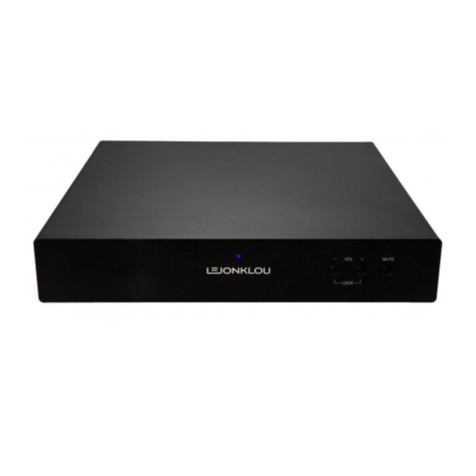
Lejonklou
Lejonklou Boazu 1.1 installation manual

Wilson Electronics
Wilson Electronics WILSONPRO PRO 140i installation guide
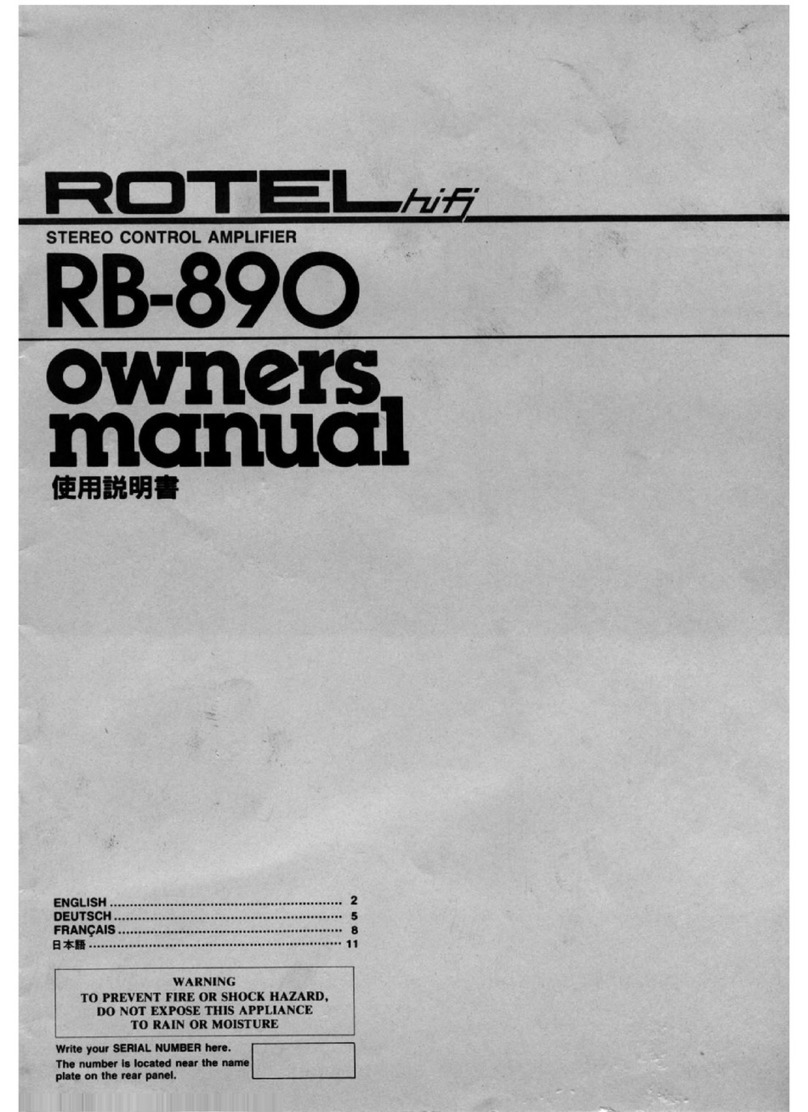
Rotel
Rotel RB-890 owner's manual
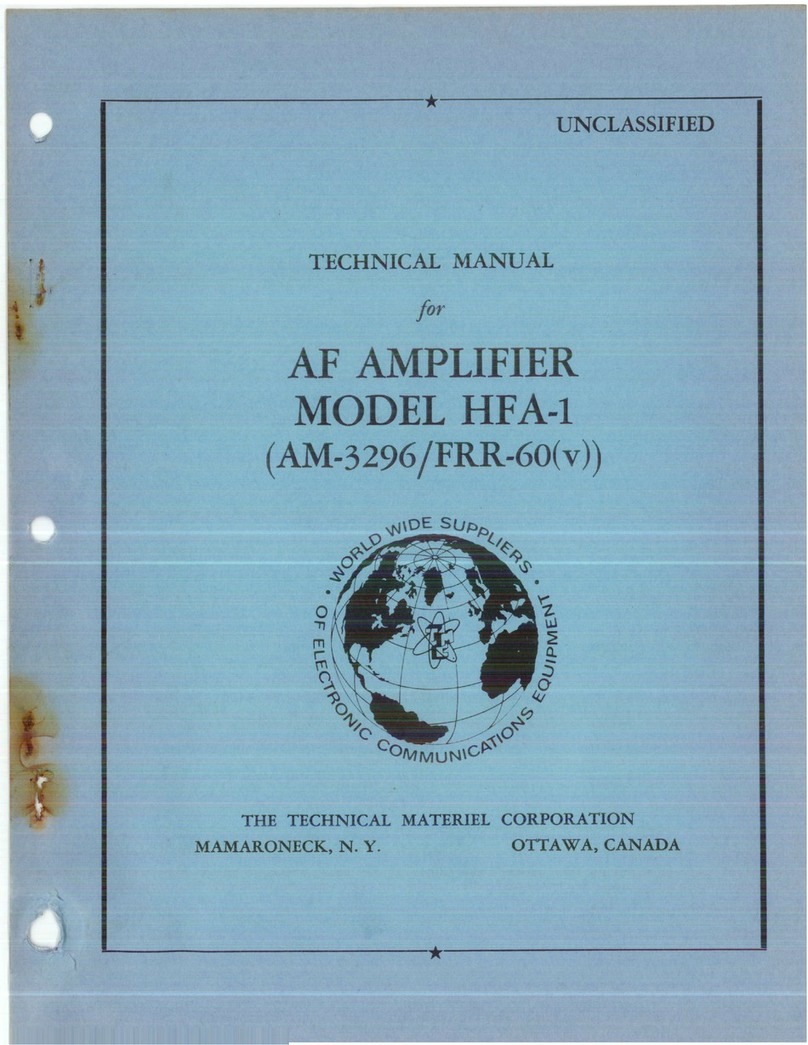
TMC
TMC HFA-1 Instruction book
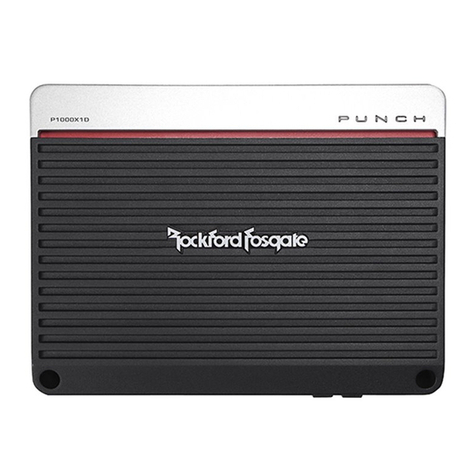
Rockford Fosgate
Rockford Fosgate PUNCH P1000X1D Installation & operation
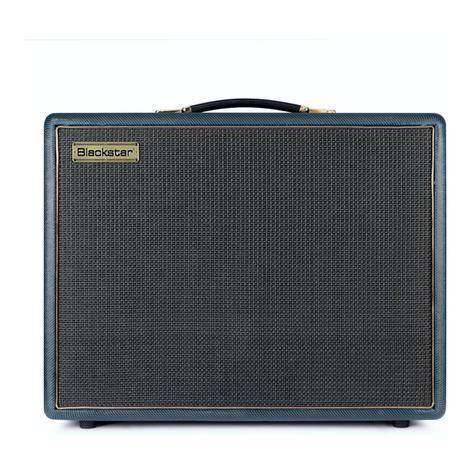
Blackstar Amplification
Blackstar Amplification CV30 owner's manual


